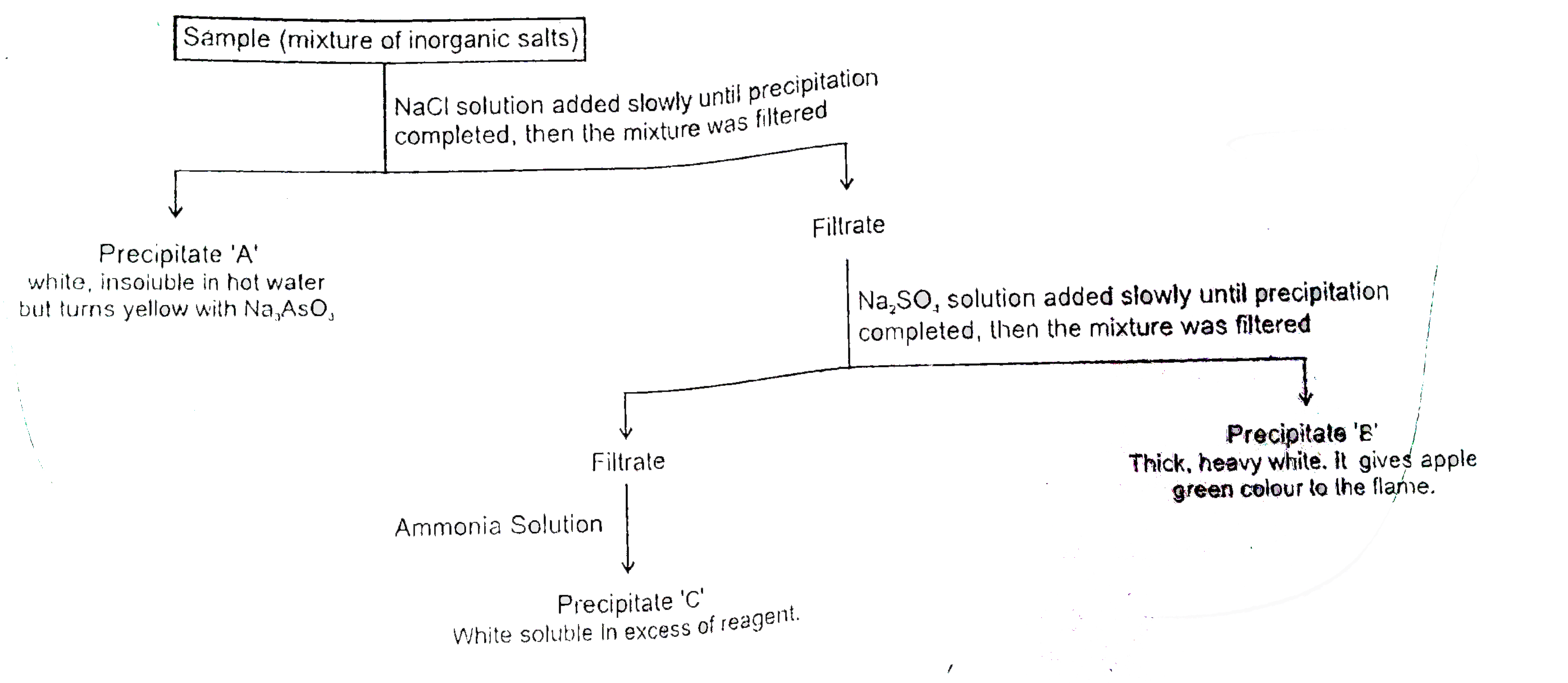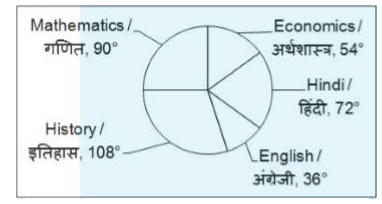Ms Diksha, a science teacher gave different substances to three students. One spatula full of copper sulphate was given to student 1, wheat flour was given to student 2 and ink was given to student 3. Each student added the given sample to water and stirred. Which of the following statements is incorrect about the mixtures prepared by them?
Particles are not visible to the naked eye in case of mixtures obtained by student 1 and student 3.
The path of light becomes visible in case of mixture obtained by student 1.
When passed through filter paper, particles of mixture obtained by student 2 remain behind on the filter paper.
The particles of mixture obtained by student 3 are about 100 times bigger than those of the mixture obtained by student 1.
The correct Answer is:B
To solve the question regarding the mixtures prepared by the three students, we need to analyze the substances they were given and the nature of the mixtures they created when added to water.
1. Identify the Substances:
- Student 1 received Copper Sulphate.
- Student 2 received Wheat Flour.
- Student 3 received Ink.
2. Determine the Nature of Each Mixture:
- Copper Sulphate in Water:
- Copper sulphate is a soluble salt. When added to water, it dissolves completely, forming a true solution. In a true solution, the solute particles are less than 1 nanometer in size, and they do not scatter light.
- Wheat Flour in Water:
- Wheat flour does not dissolve in water. Instead, it forms a suspension. In a suspension, the particles are larger than 100 nanometers and will eventually settle at the bottom if left undisturbed.
- Ink in Water:
- Ink is typically a colloidal solution. When mixed with water, it forms a colloidal solution where the particle size is between 1 nanometer and 100 nanometers. Colloidal solutions can scatter light, which is known as the Tyndall effect.
3. Evaluate the Statements:
- Statement about Copper Sulphate: "The mixture is a true solution." (True)
- Statement about Wheat Flour: "The mixture is a suspension." (True)
- Statement about Ink: "The mixture is a colloidal solution." (True)
- Statement about Light Path: "The path of light becomes visible in the mixture obtained by student 1." (Incorrect - this is false because true solutions do not scatter light.)
- Statement about Filtration: "Particles of the mixture obtained by student 2 remain on the filter paper." (True)
- Statement about Particle Size: "Particles of the mixture obtained by student 3 are about 100 times bigger than those of student 1." (True)
4. Conclusion:
- The incorrect statement is: "The path of light becomes visible in the mixture obtained by student 1." This is false because the particles in a true solution are too small to scatter light.
Final Answer:
The incorrect statement about the mixtures prepared by the students is: "The path of light becomes visible in the mixture obtained by student 1."
---
- Student 1 received Copper Sulphate.
- Student 2 received Wheat Flour.
- Student 3 received Ink.
- Copper Sulphate in Water:
- Copper sulphate is a soluble salt. When added to water, it dissolves completely, forming a true solution. In a true solution, the solute particles are less than 1 nanometer in size, and they do not scatter light.
- Wheat Flour in Water:
- Wheat flour does not dissolve in water. Instead, it forms a suspension. In a suspension, the particles are larger than 100 nanometers and will eventually settle at the bottom if left undisturbed.
- Ink in Water:
- Ink is typically a colloidal solution. When mixed with water, it forms a colloidal solution where the particle size is between 1 nanometer and 100 nanometers. Colloidal solutions can scatter light, which is known as the Tyndall effect.
- Statement about Copper Sulphate: "The mixture is a true solution." (True)
- Statement about Wheat Flour: "The mixture is a suspension." (True)
- Statement about Ink: "The mixture is a colloidal solution." (True)
- Statement about Light Path: "The path of light becomes visible in the mixture obtained by student 1." (Incorrect - this is false because true solutions do not scatter light.)
- Statement about Filtration: "Particles of the mixture obtained by student 2 remain on the filter paper." (True)
- Statement about Particle Size: "Particles of the mixture obtained by student 3 are about 100 times bigger than those of student 1." (True)
- The incorrect statement is: "The path of light becomes visible in the mixture obtained by student 1." This is false because the particles in a true solution are too small to scatter light.
The incorrect statement about the mixtures prepared by the students is: "The path of light becomes visible in the mixture obtained by student 1."
Topper's Solved these Questions
- IS MATTER AROUND US PURE ?BOOK - MTG IIT JEE FOUNDATIONCHAPTER - IS MATTER AROUND US PURE ?EXERCISE - EXERCISE (INTEGER / NUMERICAL VALUE TYPE )
5 Videos
- FOOTSTEPS TOWARDS(CBSE BOARD)BOOK - MTG IIT JEE FOUNDATIONCHAPTER - FOOTSTEPS TOWARDS(CBSE BOARD)EXERCISE - SECTION-D
14 Videos
- MATTER IN OUR SURROUNDINGS BOOK - MTG IIT JEE FOUNDATIONCHAPTER - MATTER IN OUR SURROUNDINGS EXERCISE - OLYMPIAD/HOTS CORNER
15 Videos
Similar Questions
The table given below represents the marks obtained by 5 students in 4 different subjects. Each student was given marks out of 100 in each of the given subjects.

Which student scored the maximum marks in all the 4 subjects taken together ?
View SolutionThe table given below represents the marks obtained by 5 students in 4 different subjects. Each student was given marks out of 100 in each of the given subjects.

In which subject the total marks of all the students is highest ?
View Solution
Knowledge Check
A student was given a sample of colourless solution contaning three cations and was asked to identify the cations: student carried out a series of reactions as given below.

Which of the following statement is correct?APrecipitate C gives Rinmann's green test.BPrecipitate B is appreciably soluble in boiling concentrated H2SO4CPrecipitate A on exposure to sunlight or ultraviolet radiations turns blackDAll of the aboveA student was given a sample of colourless solution containing three cations and was asked to identify the cations. Student carried out a series of reactions as given below.
Which of the following statements is correct ?
 APrecipitate 'C' gives Rinmann's green test.BPrecipitate 'B' is appreciably soluble in boiling concentrated H2SO4CPrecipitate (A) on exposure to sunlight or ultraviolet radiations turns black.DAll of these
APrecipitate 'C' gives Rinmann's green test.BPrecipitate 'B' is appreciably soluble in boiling concentrated H2SO4CPrecipitate (A) on exposure to sunlight or ultraviolet radiations turns black.DAll of theseA student was given a sample of colourless solution containing three cations and was asked to identify the cations.Student carried out a series of reactions as given below.

Which of the following statements is correct ?APrecipitate 'C' gives Rinmann's green testBPrecipitate 'B' is appreciably soluble in boling concentrated H2SO4CPrecipitate (A) on exposure to sunlight or ultraviolet radiations turns blackDAll of these
The pie chart given shows the number of marks scored by a student in the given 5 subjects. The total marks scored by the student is 480.

In which of the following 2 subjects the sum of marks scored by the student is equal to the marks scored in Mathematics?
View SolutionShalini has planned a field trip for class IV students to the Science Centre. Which one of the following general instruction given to the students in irrelevant for the trip ?
View SolutionShalini has planned a field trip for class IV students to the Science Centre. Which one of the following general instruction given to the students in irrelevant for the trip ?
View SolutionThe number of ways in which 7 different books can be given to 5 students if each can receive none, one or more books is
View SolutionAll the students of a class performed poorly in Mathematics. The teacher decided to give grace marks of 12 to the entire class. Which of the following statistical measures will not change even after the grace marks were given?
View Solution
